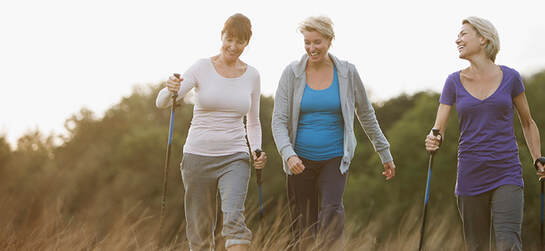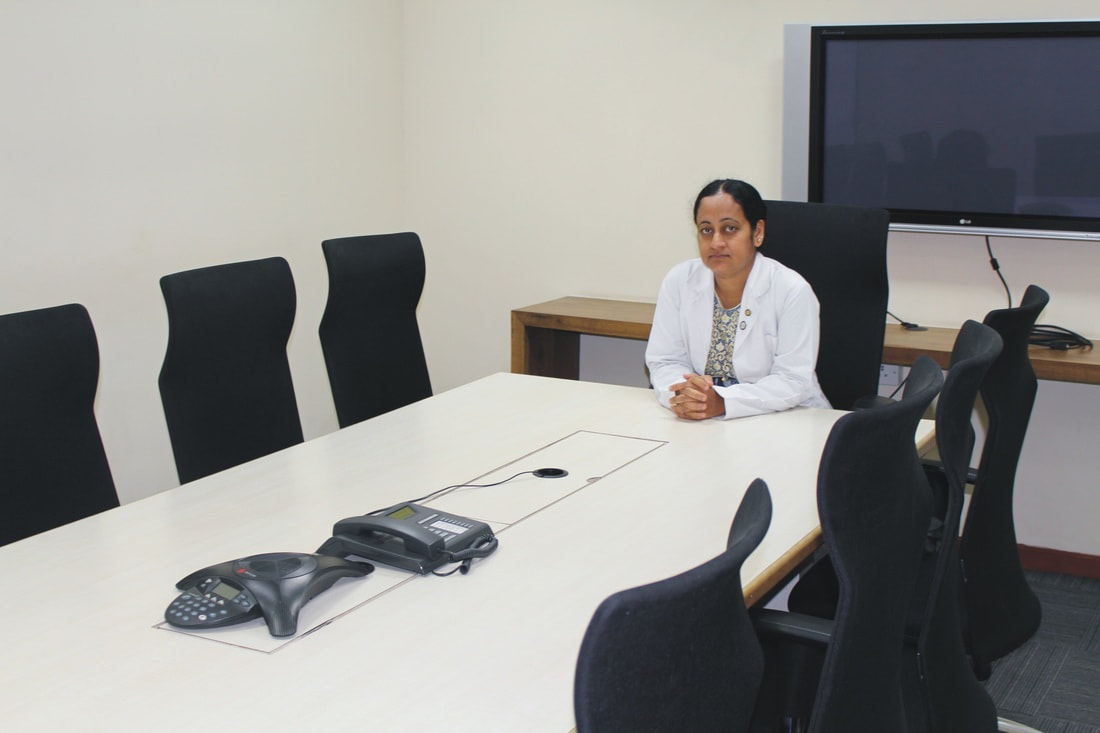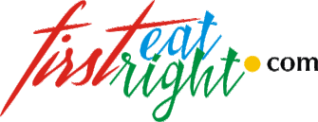 Exercise & Lifestyle Play an Active Role in Alongside Nutrition in Determining Osteoporosis Risk Exercise & Lifestyle Play an Active Role in Alongside Nutrition in Determining Osteoporosis Risk A woman’s health goes for a toss at different stages of her life owing to the staggering hormone imbalances that are prominently seen during her puberty, childbirth, monthly menstruation cycles and post-menopause. Hormones define our moods and energy levels. The efforts required to go through a smooth transition through our younger years with these hormone fluctuations is passable when we compare the changes that occur to our physical and mental well-being post menopause. Speaking of the physical body, osteoporosis affects the health of postmenopausal women making it a great cause of public concern worldwide. Osteoporosis: Porous Bones Our bones become stronger and bone mass increases only until the age of 30 after which it starts deteriorating. The quality of our bones is directly dependent on the quality of the food that goes into strengthening our bones until the age of 30 after which the food we eat helps to only maintain the nurtured strength and bone mass until menopause. After menopause there is a sharp drop in estrogen levels leading to greater bone loss paving way for conditions such as osteoporosis. Bone loss happens at a rate of 2-3% during the first few years and 0.5-1% thereafter. Osteoporosis is a progressive disease characterized by a decrease in bone mass and deterioration of bone structure leading to an increased risk of fragility fractures. The causative factors are many-genetics (almost 60%) takes a blame on one side for bone metabolism while nutrient intake takes the blame on the other end of the spectrum. We are well aware that vitamin D and calcium are integral to a healthy bone structure but other micronutrients and vitamins too are critical for a smooth bone metabolism. Despite genetics playing a more-important role in deciding bone mass variance, by adopting a heathy lifestyle that increases peak bone mass in kids and adults we can reduce the risk of osteoporosis. Dairy products have been lauded with benefits for supporting better bone mineral density (BMD) but there are also controversies surrounding their protection against osteoporosis. A population study showed that consuming 300 mg/day of calcium (one glass of milk) decreased risk of hip fracture in postmenopausal women whereas a Swedish study showed that consuming three or more glasses of milk/day increased the risk. Meta-analysis too showed that decreased milk intake was not associated with increased osteoporosis risk. These studies are from the West where the diet is enriched with abundant cheese and yogurt intake. Comparatively, the consumption of milk and dairy in Asian countries is pretty less and we need studies exploring the effects of dairy consumption on osteoporosis risk in postmenopausal women in these countries. The Korean Study While fermented foods are an integral part of every Korean household along with rice and vegetables, the importance given to dairy products is not up to the mark-only 60% (479 mg) of the recommended dietary allowance of calcium (800 mg/day). Also, the prevalence of osteoporosis among Korean women was more than double that of American women which makes the study regarding the effects of dairy on osteoporosis in countries that consume low milk and dairy products even more critical. The cohort Korean study initially included 10,038 participants aged between 40 and 69 years of which 2,317 completed their food frequency questionnaire at the baseline survey. After elimination and withdrawals only 1,573 participants remained for analysis and a dietary intake assessment was made on these participants where the dairy foods included mostly were milk, yogurt, cheese and ice cream. The frequency of servings was split into 9 categories-never, once a month, 2-3 times a month, 1-2 times a week, 3-4 times a week, 5-6 times a week, once a day, twice a day and three or more times a day. Portion sizes were classified as small, medium and large. Height and weight measurements, age of menopause, lifestyle routines, exercise routines, smoking and drinking behaviors and body mass index calculations were done for each of the participants. In the four-year follow-up period 273 new cases of osteoporosis in the radius and 407 in the tibia were identified. While smoking and physical activity did not differ between the two groups, people in the osteoporosis group were found to have higher BMI, lesser education, lower household income and living in a rural area comparatively. The radius osteoporosis group had decreased intake of milk, yogurt and dairy products in comparison to the normal group. Results showed that:
A 10-year Chinese cohort study showed that when calcium intake was <400 mg/day it proved to be a prominent risk factor for hip osteoporosis in postmenopausal women. Another study found that calcium supplements decreased bone mass loss in women who have been in their post menopause stage for more than 5 years. A cross-sectional study performed on 1,771 early postmenopausal women showed that calcium intake was never a problem for osteoporosis risk when overweight was not considered. Taking overweight into account it was found that women with the lowest calcium consumption was likelier to have osteoporosis compared to women with the highest calcium intake. A small change in dietary practice that promotes calcium intake could be of great help in reducing the risk of osteoporosis in postmenopausal women. In another study, 30 healthy postmenopausal women were either given 500ml of semi-skimmed milk increasing total calcium to 1,200 mg or were given no supplementations. At the end of the 6 weeks of trial those who received supplements had a decrease in several biochemical variables compatible with diminished bone turnover. Many studies also show that lower milk intake during childhood was a critical factor in causing osteoporosis in later adulthood in women. There are several other studies that show that intake of vitamin D and calcium proved to be a rockstar combination in reducing the risk of osteoporosis in postmenopausal women. European Study Even European data show that intake of vitamin D and calcium was below recommended ranges in postmenopausal women and this might be debilitating for bone health. Women aged 50 and above took anywhere between 600 mg/day to 900 mg/day which was below recommended ranges but the surprising fact here is that even younger adults lacked the necessary levels of these nutrients. A survey by the International Osteoporosis Foundation (IOF) showed that 60% women knew that they were at an increased risk of developing osteoporosis at some point in their life and 99% respondents realized the importance of calcium for improved bone health. Comparative Cross-sectional Study A study on 60 women who were over the age of 50 and were postmenopausal for over 5 years was conducted for analyzing the risk of osteoporosis. These women were split into two groups-the control group consisted of 30 women with a T-score at the lumbar spine or hip to the upper 1 and group case consisting of 30 women with osteoporosis with a T-score at the lumbar spine or hip equal to -2.5. Body measurements were taken, a food questionnaire was given asking for food consumption frequencies of different foods in the last 10 years, overall caloric intake and the major nutrients that were normally consumed. A questionnaire consisting of 20 items that matched the majority of foods were grouped into 6 groups-milk and dairy products, meat, poultry, fish and eggs (MPFE), fruits and vegetables, legumes and starchy foods, drinks such as coffee, tea and soft drinks, oil seeds and olive oil. The average calorie intake was similar in both the groups while protein intake was in excess and fiber intake was below recommended levels. The average calcium intake was significantly lower in the osteoporotic group compared to the control group and so was potassium intake. Intake of copper, magnesium, phosphorus and vitamin D was also significantly lower in the osteoporotic group compared to the control group. Milk and dairy products consumption were also significantly lower in the osteoporotic group but meat consumption (MPFE) was higher in women in the osteoporotic group. With respect to fats, while saturated fat intake was higher the consumption of monounsaturated fatty acids was significantly lower in the osteoporotic group. Nutrition is a prominent determinant of osteoporosis and the greatest risk factor for osteoporosis in women above the age of 50 is menopause. It is possible to combat this risk with the right intake of nutrients such as calcium, vitamin D and protein, exercising regularly and abstaining from drinking and smoking. Dairy products provide us with more of these nutrients comparatively. A glass of milk, a 180 g serving of yoghurt and 30 g of cheese gives you with 250 mg of calcium. So, it is possible to achieve daily recommendations with only 3-4 portions of dairy but if you try achieving it with vegetables or whole grains you need 24 servings of green veggies or 48 servings of whole grains to accomplish the same. By eating a well-balanced diverse diet, we can fulfill the nutrient needs of our body and keep it healthy. References High dairy products intake reduces osteoporosis risk in Korean postmenopausal women: https://e-nrp.org/search.php?where=aview&id=10.4162/nrp.2018.12.5.436&code=0161NRP&vmode=FULL Dairy intake & bone health: https://www.sciencedirect.com/science/article/pii/S0022030211005522 Nutrition & bone health in women after menopause: https://journals.sagepub.com/doi/full/10.2217/WHE.14.40https://journals.sagepub.com/doi/full/10.2217/WHE.14.40 Nutritional risk factors for postmenopausal osteoporosis: https://www.sciencedirect.com/science/article/pii/S209050681630015X Comments are closed.
|
AVOID FRAUD. EAT SMART+91 7846 800 800
|
- Home
- Written Testimonials
- Consult
- Clinics
- Blogs
-
Diet & Nutrition
- Diabetes Reversal
- IVF IUI not needed for PCOS PCOD Infertility
-
Medical Nutrition
>
-
Disease & Conditions
>
- Infertility | PCOS
- Diabetes Mellitus
- Cholesterol
- Hypothyroid
- Kidney Problems
- Hypertension
- Cardiovascular Diseases
- Liver Diseases
- Gastro intestinal disorder
- Cancer
- Metabolic Disorders
- Orthopedic Disorders
- Eating Disorders
- Dietary Recall
- Weight Record Filled By Clients
- Online Payment Transaction Details
- Online Clients Weight Check Form
- Our Program Package Service Charges
- Weight Record 2017 Clients
- Measurements sent by Clients
- Terms & Conditions Of Payment
- Thanks. Your Form is Submitted
- Video Testimonials
- Lifestyle & Wellness
- Lifestyle & Wellness Blog
- Allergy & Intolerance
- Weight Loss / Gain
- Weight Loss / Slimming Blog
-
Disease & Conditions
>
- Life Cycle Nutrition >
- Sports Nutrition >
- Integrity in Nutrition
- Knowledge Centre
© COPYRIGHT 2022. ALL RIGHTS RESERVED. FRST HEALTHCARE PVT LTD.
Dr. Nafeesa Imteyaz of First Eat Right clinic, is the Best Dietitian Nutritionist in Bangalore. Best Dietitian Nutritionist in Pune. Best Dietitian Nutritionist in Hyderabad. Best Dietitian Nutritionist in Chennai. Best Dietitian Nutritionist in Mumbai. Best Dietitian Nutritionist in Delhi. Best Dietitian Nutritionist in Kolkata.



